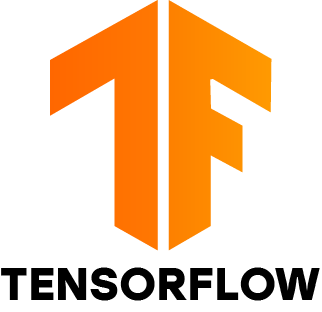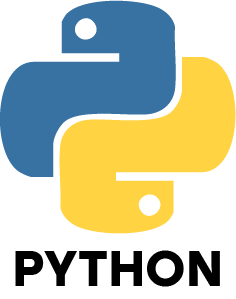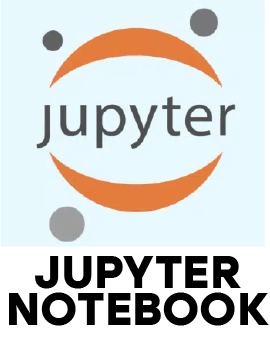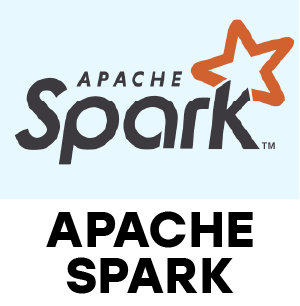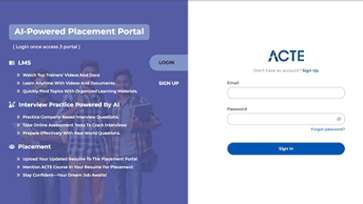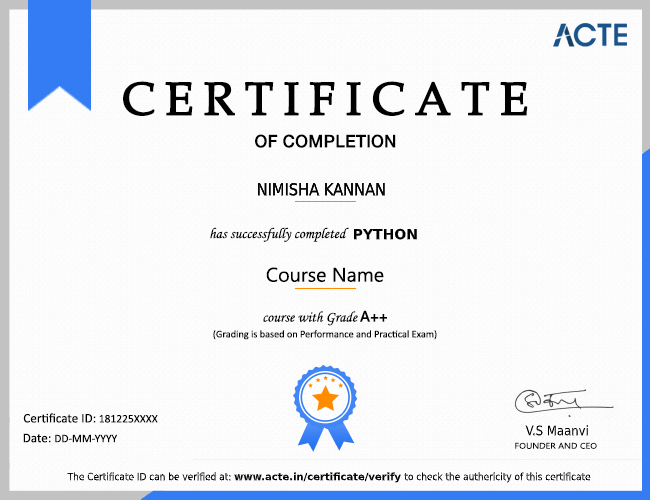Figure out how to investigate information utilizing Python. This course will take you from the nuts and bolts of Python to investigating various sorts of information. You will figure out how to plan information for examination, perform straightforward factual investigations, make significant information perceptions, anticipate future patterns from information, and that's just the beginning!
- Import informational collections.
- Clean and plan information for examination.
- Control pandas DataFrame.
- Sum up information.
- Assemble AI models utilizing scikit-learn.
- Assemble information pipelines.
Information Analysis with Python is conveyed through address, involved labs, and tasks. It incorporates the following parts:
Information Analysis libraries: will figure out how to utilize Pandas DataFrames, Numpy multi-dimensional exhibits, and SciPy libraries to work with different datasets. We will acquaint you with pandas, an open-source library, and we will utilize it to stack, control, investigate, and imagine cool datasets. Then, at that point, we will acquaint you with another open-source library, scikit-learn, and we will utilize a portion of its AI calculations to assemble shrewd models and make cool expectations.
Introduction of Data Science with Python:
Python Data Science course empowers you to concentrate without any preparation these thoughts and helps ace fundamental Python programming ideas, for example, information handling, document tasks just as article arranged programmings and diverse Python libraries, like Pandas, Numpy, and Matplotlib. This course in Python for Data Science will likewise help you to get a handle on the numerous sorts of AI, suggestion frameworks, and a lot more information science themes to start your vocation in information science.
The Python Data Science course will show you the essentials of Python programming. You will learn Data Analysis, Machine Learning, Data Visualization, Web Scraping, and Natural Language Processing (NLP) as a feature of this Data Science with Python affirmation program. In the wake of finishing this course, you will have dominated the key instruments of Data Science with Python.
Career Growth Of Data Science with Python:
Our courses are intended to forestall preconditions and no past experience. Bosses of obligatory specialized capacities for information researchers like Python and objective and capacities. You will likewise learn fundamental libraries like researchers learning, Matplotlib, NumPy, and pandas along the course. Moreover, in our Python information science course, discover all you need to think about web scratching and SQL queries.
Most information science programs end there since they are the main abilities needed to turn into an information researcher, yet we went a stage past. To assist you with standing apart from the group, we added thoughts like the UNIX order line, Git, and Github to encourage collaboration and productivity.
We at Dataquest see that it is so hard to explore a totally new expert way, accordingly we teach exceptionally. Our classes are consistently active and locking in. Bid farewell to long, exhausting recordings. With Dataquest, you'll make and running real code consistently, confirming your new capacities. In the event that you stall out, we'll assist you with refocusing. The information researcher educational program is organized as follows:
- Our vocation in Python information science incorporates a scope of courses, including a prologue to Python for amateurs all through their professions to cutting edge Python for information science.
- You will compose real code and answer to difficulties practically speaking which will permit you to get a handle on specific capabilities required for information science.
- At the finish of every meeting, you will complete a directed task to apply your new capacities to introduce expected bosses while building your portfolio.
- Upon each preparation, you will get an authentication which you can share or use to fortify your list of references with your expert network.
- You are outfitted with every one of the capacities expected to turn into an information researcher after culmination of the entire program.
Roles and Responsibilities of Data Science with Python:
Management: The information researcher plays out an insignificant administration work in supporting the structure of the data set of modern and innovative abilities to help different arranged and progressing information analyses.
Analytics: The information researcher plays a logical part in arranging, executing, and assessing significant level insights and methodologies for application in the most confounded business challenges. For various issues, like projections, grouping, bunching, design investigation, examining, reproduction, and so forth, the information researcher makes monetary and measurable models.
Strategy/Design: The Data Scientist is basic in the making of imaginative systems to comprehend the association's client patterns and the executives, just as techniques to address complex business issues, like the advancement of item satisfaction and generally profit.
Collaboration: The Data Scientist's obligation is anything but a desolate one, and in this position, he teams up with better information researchers than pass on difficulties and results to key partners to further develop the organization execution and choice making.
Knowledge: The Data Scientist is likewise driving the way in investigating different innovations and methods to give novel information-driven bits of knowledge at the deftest conceivable rate for the organization. For this situation, the information researcher additionally steps up to the plate and examine and utilize new and better business information science philosophies that he gives to the SCO.
Additional Duty: A information researcher additionally embraces related liabilities and undertakings as the senior information researcher, the information science chief, the information director, or the business assigns.
Certification Of Data Science with Python:
Simplilearn gives you an endorsement of industry-perceived fulfillment with never-ending legitimacy once you effectively finish the information science with Python coursework.AnalytixLabs affirmation is generally regarded in the business, because of our grounded area information and eminent clients in India and universally. We should keep up with the nobility of our accreditation methodology as the most elevated class Data Science Institute of India.
You will just get a recognition subsequent to introducing an obligatory task work and surveying it decently as a component of your instructional class. For these errands and ventures, there is no pass/fail.In case the tasks and activities are not forward-thinking, students ought to be welcome to give ad lib help and backing. Nonetheless, all through the assessment, no kind of literary theft is permitted.
Except for MCQ tests, there is no pass/fizzle for these undertakings and tasks. On account of the double confirmation program, you will have two opportunities to pass the MCQ tests.Our objective is to furnish learners with important active experience so they are good to go for new employee screenings and perform adequately at their employment.
Who can Learn Data Science with Python:
Long perceived according to a syntactic perspective, Python is a direct programming language. Python offers additionally a huge scope of libraries and assets in a functioning local area. You have a stage to use with innovations, for example, AI and information science.
Information science experts would prefer not to become involved with complex programming needs. They might want to make bother-free use of programming dialects, for example, Python and Ruby. Ruby is acceptable with different information pre-preparing tasks, for instance in information clearing and information munging. Be that as it may, there are not however many libraries for AI concerning Python.
In terms of information science and AI, Python is hence given the edge. In expansion, Python permits designers to construct programs and execute models to accelerate the advancement of interaction. When the undertaking has been changed into a logical device or application, it can in case fundamental be moved to further developed dialects like Java or C.
New information researchers are inclining toward Python as a result of its easy-to-use approach. So famous without a doubt, Python is viewed as their #1 programming language by a shocking 48% of information researchers with five or fewer long stretches of expertise. This number is decreased by the ascent in the level of involvement and investigation. For information specialists, Python ended up being an ideal beginning point.
Why is Python suitable for information science?
Python is the programming language of decision for regular exercises tended to by information researchers and one of the business' driving information science tools. Python is often the ideal decision for information researchers who need to place factual code into creation data sets or to associate information with electronic applications. It is additionally reasonable for calculations, which information researchers normally need to perform.
There are other Python bundles planned particularly for explicit capacities, like pandas, NumPy, and SciPy. Python's sci-pack learn is a useful and significant instrument for information researchers chipping away at different AI projects. Another Python library, Matplotlib, is an incredible decision for information science applications that require illustrations and other visualizations. When the code is written in a liquid and regular style, it is alluded to be 'Pythonic.' Aside from that, Python is notable for extra qualities that have provoked the curiosity of the information science community.
Why does Python make a difference to the investigation of data?
It is soft.If you need to accomplish something creative which has never occurred, Python is the ideal decision for you. It is incredible for creating applications and sites that wish to be scripted.
It's Simple to Understand.Its accentuation on effortlessness and intelligibility brings about a smooth and somewhat low expectation to absorb information. A python is an incredible instrument for amateur developers because of its usability. Python gives software engineers the upside of requiring fewer lines of code to perform things than more established dialects require. At the end of the day, you invest less energy in managing code and additional time playing with it.
Open source It is python is open-source, which infers that it is free and utilizes an improvement approach for the local area. Python is appropriate for Windows and Linux applications. It might likewise be promptly shipped to numerous stages. There are a few Python open-source libraries, for instance, information control, information seeing, insights, math, AI, and normal language preparing (however see beneath for additional about this).
It has a great deal of support.Anything that can turn out badly will turn out badly, and in case you're using something for which you didn't need to pay, discovering help may be troublesome. Python, luckily, has a major after and is generally utilized in scholastic and industry circles, subsequently, there are numerous useful investigation libraries open. Python clients needing help may consistently depend on Stack Overflow, mailing gatherings, and client contributed code and documentation. Furthermore, as Python fills in fame, more clients will submit data about their client encounters, bringing about extra free assistance material. These outcomes in a self-sustaining twisting of worthiness by an expanding number of people.
Industry Trends in Data Science with Python:
TensorFlow - TensorFlow is perhaps a library for superior numerical calculations with around 35000 comments and a lively collection of some 500 contributors. It is utilized in several sectors of science. TensorFlow is a framework for the description and operation of tensor calculations that measure machine objects partially described, which finally provide a value. Better display of the machine graph. Reduces neural machine learning errors by 50 to 60 p.c. Smooth library management, parallel computing to perform complex models.
SciPy (Scientific Python) - SciPy (Scientific Python) is another free and ASCII text file Python library for knowledge research that is widely used for high-level calculations. Zippy has about nineteen repositories on GitHub and a thriving community of around 600 people. It is widely used for scientific and technical computations since it extends NumPy and provides a variety of simple and cost-effective algorithms for scientific calculations. Algorithms and functions are written in Python using the NumPy module. Commands for manipulating knowledge and mental images at the highest levels. SciPy image submodule for multidimensional image processing.
NumPy — NumPy (numerical python) provides a strong N-dimensional array object as the fundamental computer package in Python. There are about 18000 comments on GitHub and a vibrant 700-person community. It is a generic array processing program with better flat objects known as arrays and tools. In addition, NumPy partially solves the sluggish disadvantage by offering such flat arrays as the supply of features and operators with efficiency.
Matplotlib - Matplotlib provides strong but visually appealing visualizations. It's a Python charting package with over 26,000 comments on GitHub and a thriving community of 700 developers. It is often used for information mental because of the graphs and charts that it generates. It also has an object-oriented API in case you wish to include such graphs in your apps.
PyTorch – PyTorch is a Python-based scientific computing package using the strength of graphics processing units, and the next item in the list of the top Python libraries for data science. PyTorch is one of the most popular profound learning systems for research designed to give maximum flexibility and speed.
BeautifulSoup is a successful Python package for data science. This is another popular Python module, well known for internet creep and information scraping. Users will collect information that square measure given on some website without a suitable CSV or API, and BeautifulSoup will assist them in scraping it and preparing it in the desired format.
A python is a smart apparatus with an expansive assortment of benefits in the field of information science. It is flexible and continually advancing because it is open-source. Besides, Python offers a variety of supportive libraries that might be joined as well as existing designs with different dialects (like Java). Short account - A python is an incredible instrument in information science.
The first of Python's few information advantages is its effortlessness. Though certain researchers return with a mechanical foundation or perceive diverse programming dialects, they have a few measurable foundations, mathematics, or different procedures, and after entering the field of information science they ought not to have the most extreme number of cryptography aptitude. Python's linguistic structure is not difficult to peruse and compose, which makes it simple to begin and learn rapidly.
If the sheer number of individuals utilizing Python isn't sufficient to persuade you regarding its importance in information science, perhaps the libraries accessible to make information science cryptography less difficult can. In Python, a library may be an assortment of modules with pre-constructed code to assist with normal assignments. They permit the United States to profit from and depend on the work of others. Some information science exercises would be troublesome and tedious to code without any preparation in different dialects. In Python, there are a few libraries accessible, for example, NumPy, Pandas, and Matplotlib to create information cleaning, information investigation, information visual picture, and machine learning.
A decent information researcher's coding capacities, alongside measurable arrangement and the ability to think basically. A portion of the information researcher abilities needed in information science which will profit from extraordinary occupation prospects are:



